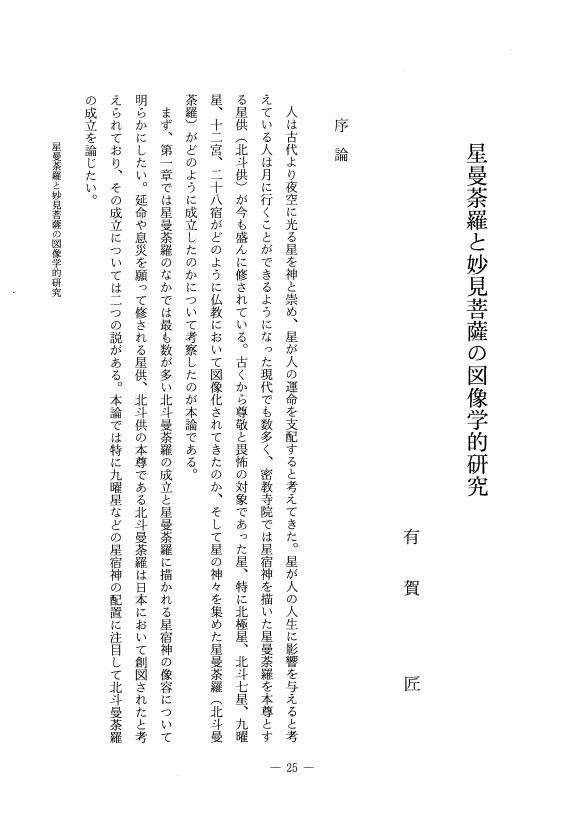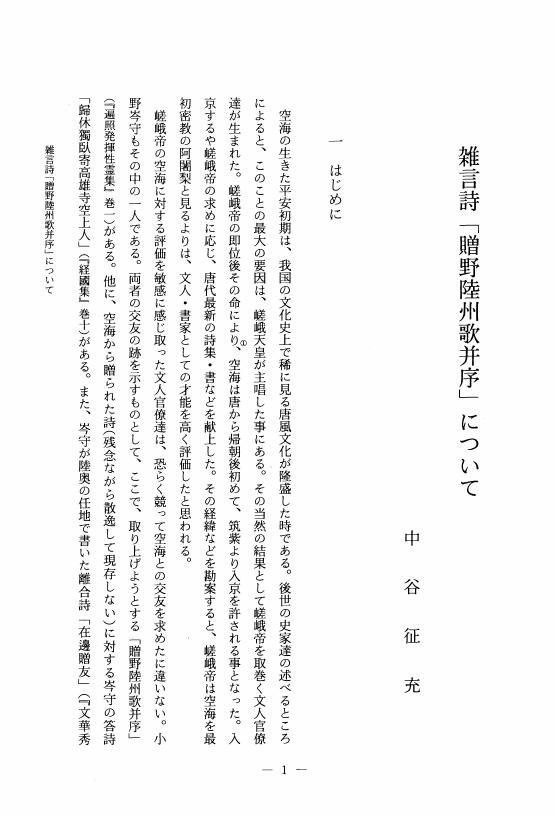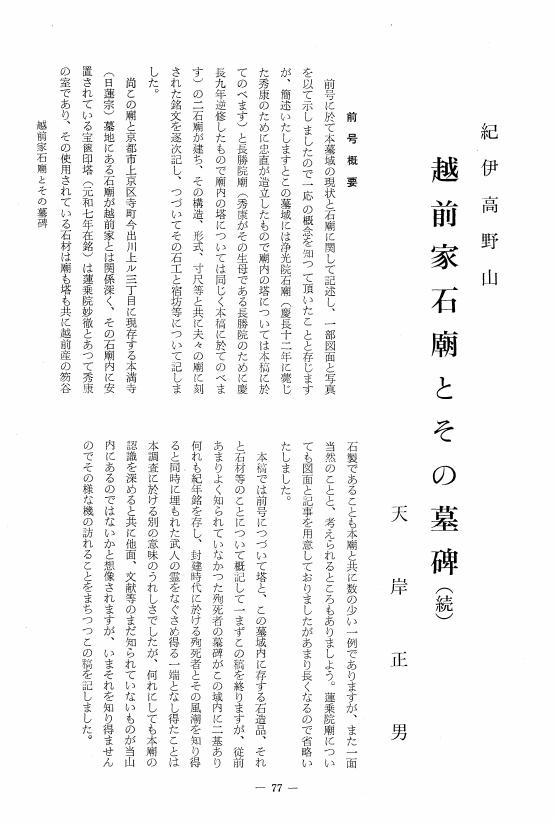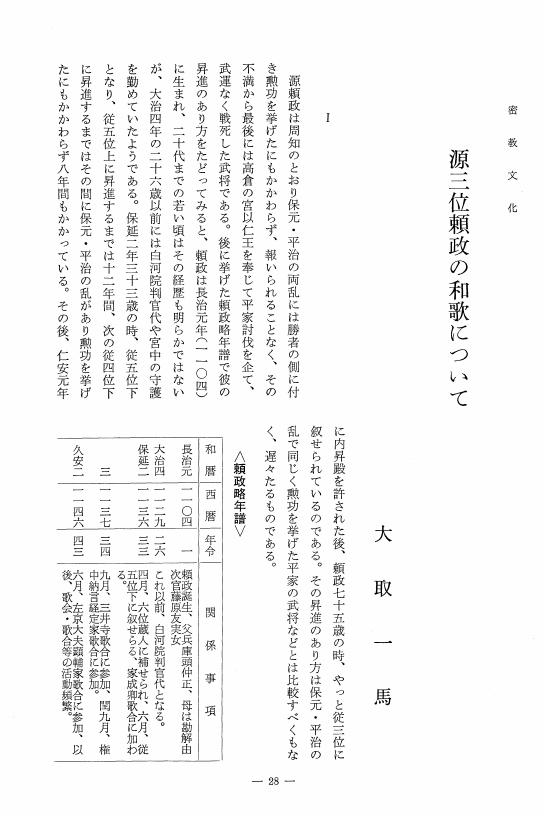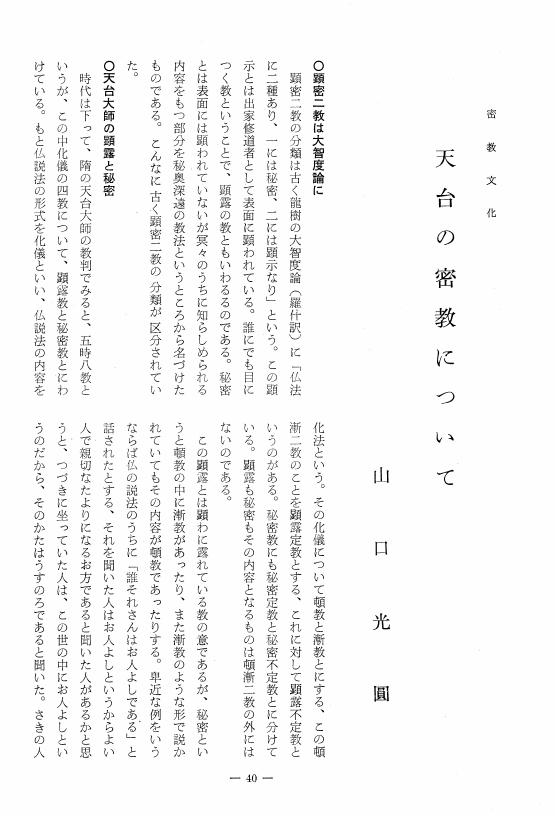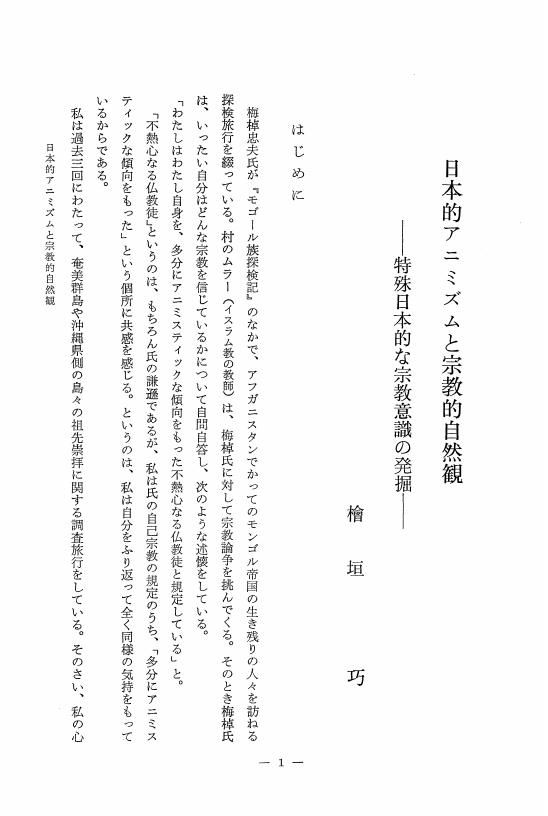18 0 0 0 OA 『中論』における「縁起」の意義
- 著者
- 中村 元
- 出版者
- 密教研究会
- 雑誌
- 密教文化 (ISSN:02869837)
- 巻号頁・発行日
- vol.1965, no.71-72, pp.105-121, 1965-04-01 (Released:2010-03-12)
13 0 0 0 OA 星曼荼羅と妙見菩薩の図像学的研究
- 著者
- 有賀 匠
- 出版者
- 密教研究会
- 雑誌
- 密教文化 (ISSN:02869837)
- 巻号頁・発行日
- vol.2000, no.204, pp.25-63, 2000-03-31 (Released:2010-03-12)
11 0 0 0 OA 行基の誕生説話とその展開
- 著者
- 米山 孝子
- 出版者
- 密教研究会
- 雑誌
- 密教文化 (ISSN:02869837)
- 巻号頁・発行日
- vol.1993, no.183, pp.27-46, 1993-08-30 (Released:2010-03-12)
11 0 0 0 OA 加持祈祷の科学的根拠
- 著者
- 平井 巽
- 出版者
- 密教研究会
- 雑誌
- 密教文化 (ISSN:02869837)
- 巻号頁・発行日
- vol.1951, no.14, pp.37-53, 1951-06-25 (Released:2010-03-16)
8 0 0 0 源三位頼政の和歌について
- 著者
- 大取 一馬
- 出版者
- 密教研究会
- 雑誌
- 密教文化 (ISSN:02869837)
- 巻号頁・発行日
- vol.1983, no.142, pp.28-41, 1983
7 0 0 0 OA 雑言詩「贈野陸州歌井序」について
- 著者
- 中谷 征充
- 出版者
- 密教研究会
- 雑誌
- 密教文化 (ISSN:02869837)
- 巻号頁・発行日
- vol.2005, no.214, pp.1-18, 2005-03-21 (Released:2010-03-12)
7 0 0 0 OA 中ノ川実範の生涯とその浄土教 新出資料『念仏式』と『阿弥陀私記』を中心に
- 著者
- 佐藤 哲英
- 出版者
- 密教研究会
- 雑誌
- 密教文化 (ISSN:02869837)
- 巻号頁・発行日
- vol.1965, no.71-72, pp.21-52, 1965-04-01 (Released:2010-03-12)
6 0 0 0 OA 〈菩薩地戒品〉に説かれる「殺生」について
- 著者
- 藤田 光寛
- 出版者
- 密教研究会
- 雑誌
- 密教文化 (ISSN:02869837)
- 巻号頁・発行日
- vol.1995, no.191, pp.L152-L136, 1995-06-25 (Released:2010-03-12)
6 0 0 0 OA 「呉音」と「漢音」
- 著者
- 小林 明美
- 出版者
- 密教研究会
- 雑誌
- 密教文化 (ISSN:02869837)
- 巻号頁・発行日
- vol.1984, no.145, pp.L116-L86, 1984-01-21 (Released:2010-03-12)
6 0 0 0 OA 紀伊高野山越前家石廟とその墓碑 (続)
- 著者
- 天岸 正男
- 出版者
- 密教研究会
- 雑誌
- 密教文化 (ISSN:02869837)
- 巻号頁・発行日
- vol.1958, no.41-42, pp.77-98, 1958-11-10 (Released:2010-03-12)
6 0 0 0 OA 梵文『小本・般若心経』和訳
- 著者
- 原田 和宗
- 出版者
- 密教研究会
- 雑誌
- 密教文化 (ISSN:02869837)
- 巻号頁・発行日
- vol.2002, no.209, pp.L17-L62, 2002-12-21 (Released:2010-03-12)
- 参考文献数
- 68
6 0 0 0 OA 源三位頼政の和歌について
- 著者
- 大取 一馬
- 出版者
- 密教研究会
- 雑誌
- 密教文化 (ISSN:02869837)
- 巻号頁・発行日
- vol.1983, no.142, pp.28-41, 1983-03-21 (Released:2010-03-12)
5 0 0 0 OA プラーナ概説
- 著者
- 中野 照義 ウインテルニッツ
- 出版者
- 密教研究会
- 雑誌
- 密教文化 (ISSN:02869837)
- 巻号頁・発行日
- vol.1958, no.40, pp.25-72, 1958-05-25 (Released:2010-03-12)
5 0 0 0 公的扶助の縁辺グループ「住所不定者」への公的扶助の対応
- 著者
- 上畑 恵宣
- 出版者
- Association of Esoteric Buddhist Studies
- 雑誌
- 密教文化 (ISSN:02869837)
- 巻号頁・発行日
- vol.1996, no.195, pp.L58-L30, 1996
5 0 0 0 OA 天台の密教について
- 著者
- 山口 光圓
- 出版者
- 密教研究会
- 雑誌
- 密教文化 (ISSN:02869837)
- 巻号頁・発行日
- vol.1964, no.69-70, pp.40-60, 1964-11-30 (Released:2010-03-12)
5 0 0 0 OA 西南院蔵「寛治二年白河上皇高野御幸記」
- 著者
- 和多 昭夫
- 出版者
- 密教研究会
- 雑誌
- 密教文化 (ISSN:02869837)
- 巻号頁・発行日
- vol.1960, no.51, pp.66-82, 1960-12-25 (Released:2010-03-12)
5 0 0 0 OA わが国如意宝珠信仰の歴史的展開
- 著者
- 村山 修一
- 出版者
- 密教研究会
- 雑誌
- 密教文化 (ISSN:02869837)
- 巻号頁・発行日
- vol.1984, no.148, pp.81-96, 1984-12-21 (Released:2010-03-12)
4 0 0 0 OA いのちの危機とケアの霊性 新霊性文化の底流
- 著者
- 島薗 進
- 出版者
- 密教研究会
- 雑誌
- 密教文化 (ISSN:02869837)
- 巻号頁・発行日
- vol.2008, no.220, pp.L13-L35,174, 2008-03-21 (Released:2010-03-12)
- 参考文献数
- 14
In 2006 the term spiritual was extremely popular on Japanese television. The paranormal entertainment culture that had demonstrated a decline following the incidents concerning AUM Shinrikyo in 1995 regained opularity. In the background of this cultural popularity, however, was the emergence of a spiritual phenomenon over a much longer time span. If this may be called the New Spirituality Culture, it had already shown signs of emerging in the 1970s. At the time there was a pronounced desire for a utopian future in the culture mainly borne by the young, and this trend expanded in its social support base to permeate all levels of society. The field of care is representative of this, and the need for spirituality within all systems inclusive of medical care, education, and psychotherapy was recognized. In the background were the social circumstances of increased possibilities for encountering difficult problems within the dismemberment of communities and isolation of individuals. Put differently, the life collectivity of individuals became less robust. Such threats to life were felt to be brought on by modern civilization, and awareness of the limitations of modern civilization increased. Simultaneously, people's expectation towards religion increased, but in the developed countries the trend was to expect more of spirituality than of religions. It is important to understand the increasing interest in the field of terminal care within such trend.
4 0 0 0 OA 日本的アニミズムと宗教的自然観 特殊日本的な宗教意識の発掘
- 著者
- 檜垣 巧
- 出版者
- 密教研究会
- 雑誌
- 密教文化 (ISSN:02869837)
- 巻号頁・発行日
- vol.1989, no.165, pp.1-31, 1989-03-10 (Released:2010-03-12)
- 参考文献数
- 13
4 0 0 0 OA 苦行の否定
- 著者
- 谷川 泰教
- 出版者
- 密教研究会
- 雑誌
- 密教文化 (ISSN:02869837)
- 巻号頁・発行日
- vol.1987, no.158, pp.L142-L130, 1987-03-21 (Released:2010-03-12)

